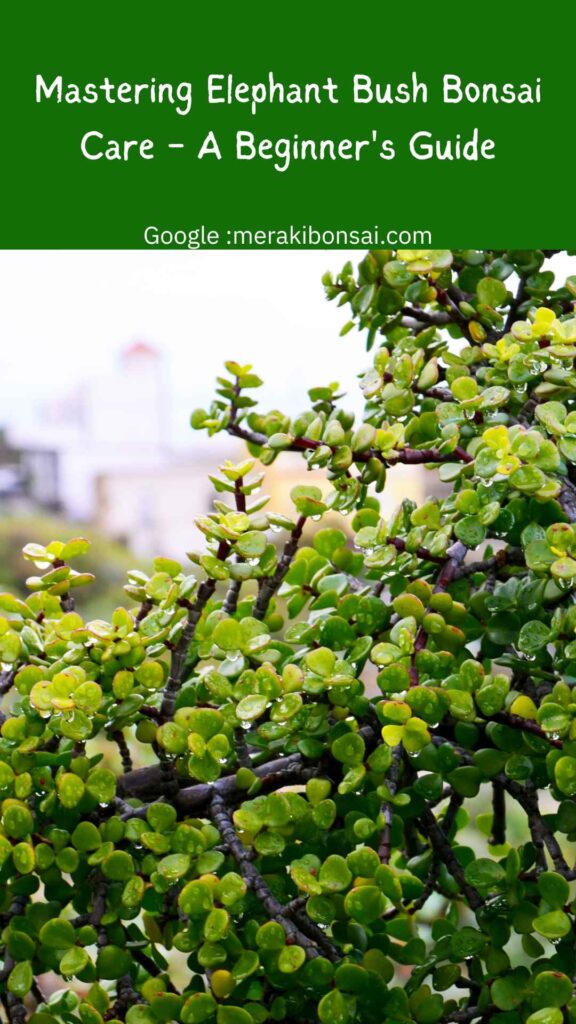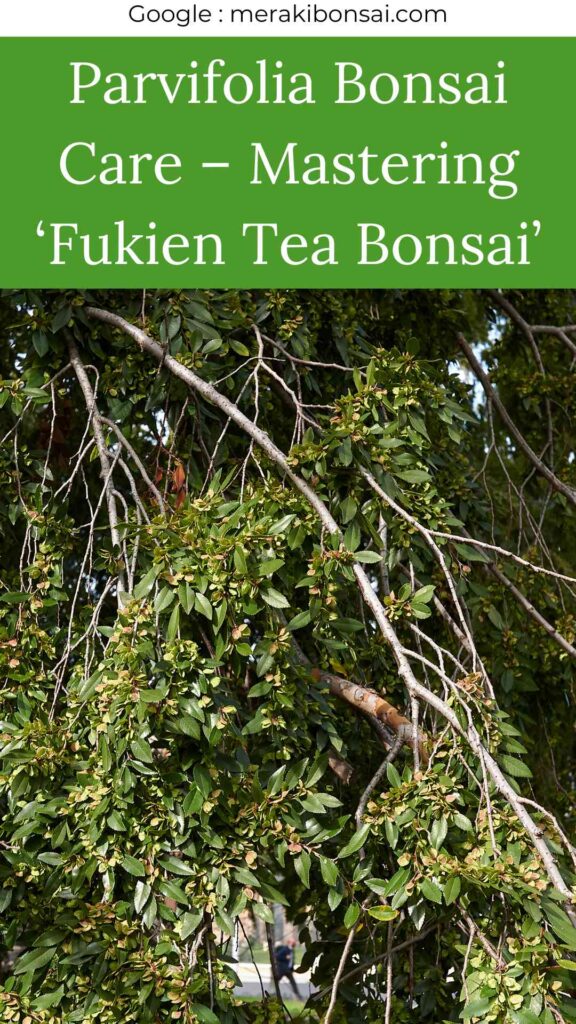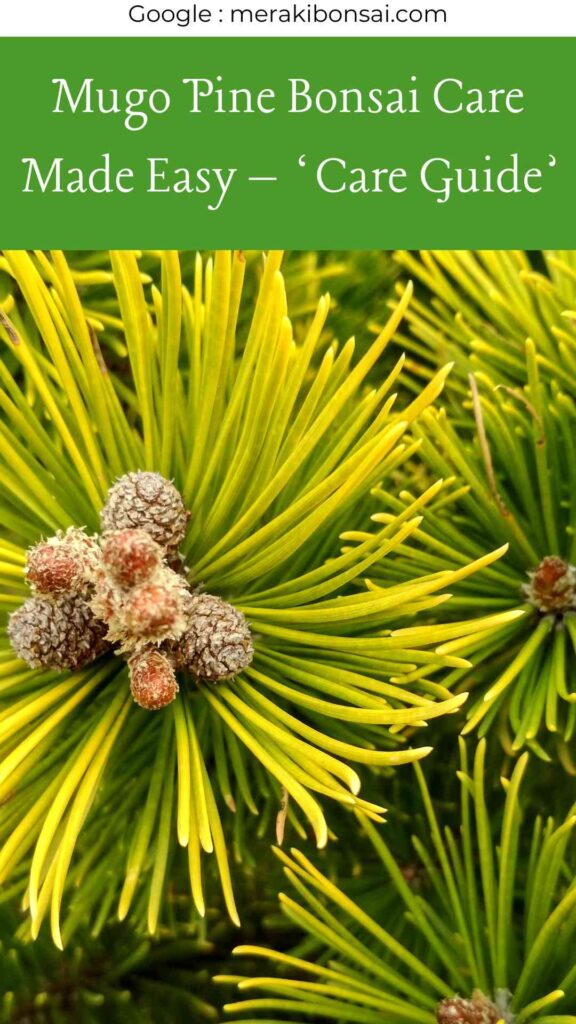
Hey there, bonsai buddies! It’s Raima here, your friendly neighborhood bonsai enthusiast. If you’re new to the wonderful world of bonsai trees, you’re in for a treat.
Today, we’re diving deep into the care and nurturing of one of my personal favorites: the Elephant Bush bonsai. Don’t let the name fool you; this little tree is a powerhouse of beauty and resilience!
As someone who’s been tending to these miniature marvels for over a decade, I can tell you that the Elephant Bush, or Portulacaria afra, is a fantastic choice for beginners.
It’s like the laid-back friend of the bonsai world – easygoing, adaptable, and always ready to bounce back from a little neglect. Perfect for those of us who sometimes forget to water our plants, right?
So, grab your gardening gloves (or just your curiosity), and let’s embark on this green adventure together!
Understanding Your Elephant Bush Bonsai
First things first, let’s get to know our little green friend. The Elephant Bush, native to South Africa, is a succulent tree.
That means it stores water in its leaves and stems, making it super resilient to drought. In the wild, these trees can grow up to 20 feet tall! But as a bonsai, we keep it tiny and mighty.
Why is it called an Elephant Bush? Well, in its native habitat, elephants love to munch on these trees. Don’t worry, though; your pet elephant (if you have one!) won’t gobble up your bonsai.
What makes this bonsai a star for beginners?
Drought-tolerant: Forgot to water for a few days? No worries!
Fast-growing: You’ll see progress quickly, which is so satisfying.
Adaptable: It can handle a range of light conditions.
Pest-resistant: Bugs tend to leave it alone. Phew!
Setting Up Your Bonsai’s Home
Now that you’re acquainted, let’s talk about where your Elephant Bush will live. Just like us, these little trees need a cozy, comfortable home.
Choosing the Right Pot
First up, the pot. This isn’t just a container; it’s your bonsai’s home. You want something that’s not only functional but also complements your tree’s style.
For Elephant Bush bonsai, I love using ceramic pots like this Ceramic Bonsai Planter Pot.
The earthy tones match the tree’s natural vibe, and the drainage holes are crucial for preventing root rot.
Remember, bonsai pots are shallower than regular plant pots. This isn’t to cramp your tree’s style, but to control root growth and maintain that adorable miniature size.
If you’re repotting, this Bonsai Pot is a great choice with its classic design and perfect size.
Soil: The Foundation of Health
Next, let’s talk dirt! But not just any dirt – we’re talking bonsai soil. Your Elephant Bush needs a mix that drains well. Why? Because succulents hate having wet feet. A good mix includes:
- Akadama (a type of clay)
- Pumice or lava rock
- A bit of regular potting soil
This combo ensures your tree’s roots get air and don’t sit in water. You can find pre-mixed bonsai soils, or if you’re feeling crafty, mix your own!
Location, Location, Location
Where you place your bonsai can make or break its health. Elephant Bush bonsai love light. They’re sun-worshippers, but they can also adapt to bright, indirect light.
A south-facing window is ideal, but east or west works too.
If you’re limited on natural light (hello, apartment dwellers!), don’t fret. Bonsai Indoor Lights are a game-changer.
These aren’t just any lights; they’re specially designed to give your bonsai the spectrum it needs to thrive.
Watering: The Goldilocks Approach
Watering bonsai is an art. Too little, and they dry out. Too much, and hello, root rot. With Elephant Bush bonsai, it’s all about finding that “just right” balance.
Here’s my foolproof method:
- Check the soil: Stick your finger about an inch into the soil. If it’s dry, it’s watering time.
- Water thoroughly: Use a Watering Can with a fine nozzle to simulate a gentle rain. Water until it runs out the drainage holes.
- Let it dry: Allow the top inch of soil to dry out before watering again.
In summer, you might water every 3-4 days. In winter, maybe once a week.
It’s all about listening to your tree. And remember, it’s better to underwater than overwater an Elephant Bush.
Feeding Your Bonsai
Just like us, bonsai need their vitamins! Fertilizing is how we make sure our little trees get all the nutrients they need.
For Elephant Bush bonsai, a balanced, water-soluble fertilizer works wonders. I swear by this Fertilizer. It’s like a multivitamin for your bonsai!
During the growing season (spring and summer), fertilize every two weeks. In fall and winter, cut back to once a month.
This mimics the tree’s natural growth cycle. Remember, with fertilizer, a little goes a long way. Always follow the package instructions.
Jasmine Bonsai Care: Crafting Fragrant Miniature Wonders
Pruning: Shaping Your Masterpiece
Now for the fun part – pruning! This is where you get to be the artist, shaping your bonsai into a miniature masterpiece. But don’t worry, you don’t need to be Michelangelo.
With the right tools and a bit of patience, anyone can do it.
First, invest in good tools. These Bonsai Pruning Tools are a great starter set.
For more precise cuts, especially on those small Elephant Bush leaves, these Bonsai Pruning Scissors are a must-have.
When to prune:
Spring: Remove dead or crossing branches.
Summer: Light trimming to maintain shape.
Avoid heavy pruning in fall and winter when growth slows.
How to prune:
- Start with dead or diseased branches.
- Remove branches that cross or rub against each other.
- Trim back long shoots to encourage a compact shape.
- Always cut just above a leaf node (where leaves sprout).
Remember, the goal is to mimic a full-sized tree in miniature.
Take your time, step back often to assess your work, and don’t be afraid to let your tree’s natural style shine through.
Wiring: Guiding Growth
Wiring is another technique to shape your bonsai. It involves gently wrapping wire around branches to guide their growth.
With Elephant Bush bonsai, be extra gentle. Their branches are succulent and can scar easily.
Use soft aluminum or annealed copper wire. Wrap it carefully around branches, avoiding leaves.
Leave the wire on for a few months, but check regularly to ensure it’s not cutting into the growing branch. Once the branch holds its new shape, remove the wire.
Jacaranda Bonsai: How to Cultivate Tiny Purple Paradises
Dealing with Pests and Problems
Even in the best-cared-for bonsai, problems can pop up. But don’t panic! Most issues are easily fixable, especially with Elephant Bush bonsai.
Pests:
These tough little trees aren’t a big target for pests, but sometimes mealybugs or spider mites might try to crash the party.
If you spot these tiny invaders, this Organic Insecticide is your new best friend. It’s effective but gentle, so it won’t harm your bonsai.
Common Problems:
- Yellowing leaves: Often a sign of overwatering. Let the soil dry out more between waterings.
- Leaf drop: Can be due to changes in temperature or light. Ensure stable conditions.
- Leggy growth: Not enough light. Move to a brighter spot or use grow lights.
For any issue, the key is early detection.
I check my bonsai every few days.
It’s a great excuse for some one-on-one time with your green buddy!
Monitoring Soil Moisture
One tool I can’t live without is my Soil Moisture Meter.
It takes the guesswork out of watering. Just stick it in the soil, and it tells you if your bonsai is thirsty or not.
It’s especially handy for Elephant Bush bonsai because they prefer to dry out between waterings.
Season by Season: Year-Round Care
Bonsai care changes with the seasons, just like our wardrobes! Here’s a quick guide to year-round Elephant Bush bonsai care:
Spring:
- Repot if needed (every 2-3 years)
- Start fertilizing
- Prune for shape
Summer:
- Water more frequently
- Watch for pests
- Light pruning
Fall:
- Reduce watering and fertilizing
- Bring indoors if temperatures drop below 40°F (4°C)
Winter:
- Minimal watering and fertilizing
- Provide bright, indirect light
- No pruning unless necessary
Remember, your bonsai is a living thing. It’ll tell you what it needs if you pay attention. Brown leaf tips? It’s thirsty. Droopy leaves? It might be too wet. You’ll get the hang of it in no time!
Growing Lotus Bonsai: Secrets to Aquatic Bonsai Success
The Joy of Bonsai
You know, there’s something truly special about bonsai. In our fast-paced world, these little trees remind us to slow down, to nurture, and to find beauty in the small things.
Every time I water my Elephant Bush bonsai or trim a tiny branch, it’s like a mini meditation session.
And the best part? Sharing this joy with others. That’s why I started this blog. Whether you’re a busy parent, a student, or someone looking for a calming hobby, bonsai is for you.
It’s not just about growing a tree; it’s about growing patience, mindfulness, and a connection to nature.
So, as you embark on your bonsai journey with your Elephant Bush, remember: every bonsai tree has a story. Yours is just beginning.
Cherish the journey, learn from the little hiccups, and most importantly, have fun!
A Little Help Goes a Long Way
Running this blog and sharing my bonsai knowledge is a labor of love. If you’ve found this guide helpful, consider buying me a coffee.
Your support helps keep this blog running and motivates me to create more content.
Every little bit helps, just like every drop of water helps your bonsai grow! You can support me here: Buy Raima a Coffee.
Your support means the world to me and helps ensure that I can continue providing free, quality bonsai advice to enthusiasts like you.
Thank you from the bottom of my bonsai-loving heart!
Frequently Asked Questions
Now, let’s tackle some of the most common questions I get about Elephant Bush bonsai care. Think of this as your bonsai cheat sheet!
How often should I water my Elephant Bush bonsai?
Water when the top inch of soil feels dry. In summer, this might be every 3-4 days. In winter, it could be once a week. Always check the soil first!
Can I keep my Elephant Bush bonsai indoors year-round?
Yes! They adapt well to indoor conditions. Just ensure they get enough light, either from a sunny window or grow lights.
My Elephant Bush bonsai is dropping leaves. Is it dying?
Not necessarily. Leaf drop can be a response to changes in light, temperature, or watering. Ensure stable conditions and proper watering.
How do I know when to repot my Elephant Bush bonsai?
Typically every 2-3 years, or when the tree outgrows its pot. Signs include roots circling the pot or soil that doesn’t hold water well.
Can I propagate my Elephant Bush bonsai?
Absolutely! They’re easy to propagate. Cut a healthy stem, let it callus for a day, then plant in well-draining soil. Voila! A new bonsai baby.
Are Elephant Bush bonsai toxic to pets?
They’re generally considered non-toxic. However, it’s always best to keep plants out of reach, as ingestion can cause minor stomach upset.
How long does an Elephant Bush bonsai live?
With proper care, they can live for decades! Some bonsai enthusiasts pass their trees down through generations.
My bonsai has white spots on the leaves. What’s wrong?
It could be mealybugs. Remove them with a cotton swab dipped in alcohol, or use an organic insecticide.
Can I put my Elephant Bush bonsai outside in summer?
Yes, they love sunlight. Just acclimate gradually to avoid sunburn, and bring them in if temperatures drop below 40°F (4°C).
How do I know if I’m overwatering or underwatering?
Overwatering causes yellowing leaves and a mushy stem. Underwatering results in shriveled, dry leaves. A soil moisture meter can help you find the balance.
And there you have it, bonsai buddies! You’re now equipped with the knowledge to raise a happy, healthy Elephant Bush bonsai. Remember, every bonsai journey is unique. You’ll learn, adapt, and grow alongside your little tree.
So go forth, nurture your bonsai, and enjoy the peace and joy it brings. And hey, if you ever have questions or just want to share your bonsai victories (or oops moments – we all have them!), drop a comment. This bonsai community is here for you!
Until next time, happy bonsai-ing! 🌿
Love, Raima


